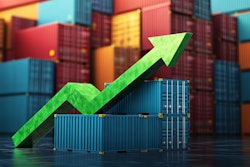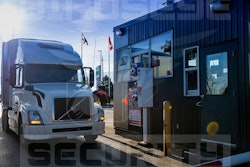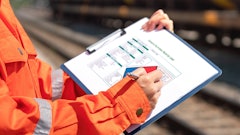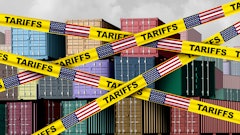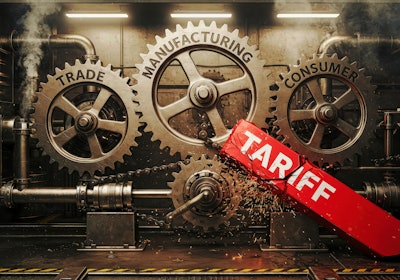
When Allied commanders planned the Normandy invasion in 1944, accuracy in planning and execution was critical. Any mistake could have jeopardized the mission.
Fast forward to April 2. For importers, Aug. 7 became their own “D-Day.”
The Trump Administration landed new reciprocal tariffs on U.S. importers when it announced “Liberation Day” duties under the International Emergency Economic Powers Act (IEEPA).
On May 27, the Court of International Trade initially blocked the duties, ruling that the administration had overstepped its authority. In July, the U.S. Appeals Court upheld that decision, albeit with an instruction that importers must continue to pay the duties under reciprocal tariffs until the U.S. Supreme Court decides the case, which is currently scheduled for March 2026.
Meanwhile, on Aug. 1, the administration announced new reciprocal tariffs that took effect just six days later. Landed costs surged overnight, disrupting supply chains and requiring quick adjustments.
Here’s some top strategies for shippers, freight carriers, and logistics providers to win the battles against tariffs and other industry challenges.
Exemptions and tariff stacking
On the morning of Aug. 7, every U.S. importer woke up to a higher cost of goods.
The increases differ by country and add to tariffs already in place since February. Annex Two of the U.S. Harmonized Tariff Schedule outlines product-specific exemptions from reciprocal tariffs, such as aluminum, steel, and pharmaceuticals. However, these exemptions could face higher taxes in the future.
For example, the pharmaceutical industry might face a 200% tax on its products in the next two years. The semiconductor industry is set to encounter a 50% industry tax sometime between September and December of this year.
What’s more, country-specific rules remain fluid after Aug. 7:
● Brazil’s tariff jumped from 40% to 50%.
● Mexico was granted a 90-day exemption, holding rates at 15%.
● The EU has a 15% minimum duty floor.
● Japan recently negotiated a 15% tariff.
● India recently negotiated a 25% rate, down from 50%.
China remains a case study in how new tariffs add to existing ones, a practice called “tariff stacking.” Since April, its rates have swung wildly from 34% to 125% before settling at 10%, but this could change to 34% on Nov. 14. Even at that level, a typical Chinese import could face:
● Regular duty: 25%
● China 301 tariff (2018): 25%
● IEEPA tax: 20%
● Aluminum/steel duties: varied
● Reciprocal tax: 10% (proposal to raise to 34%)
China is fighting back, having announced on Oct. 9 a 50% tariff on rare earth minerals sourced from China, which is going to be a huge factor in how the U.S. responds in this trade war.
With duties due within 10 days of import, there’s a need for precision in landed cost calculations.
Under Section 232 of the Trade Expansion Act of 1962, the administration can impose tariffs on imports threatening national security. As of Aug. 1, the 50% tariff on steel and aluminum now includes copper. This change requires importers to know the precise steel, aluminum, and copper content of their goods. This data is often missing from standard invoices, slowing clearance and increasing compliance risk.
The 232 program has since expanded to include tariffs on imports of wooden products, such as cabinets and furniture, effective Oct. 14, and a 25% tariff on imports of medium- and heavy-duty trucks, effective Nov. 1.
Additionally, goods under $800 that were once entered duty-free now require customs filings. Initially, this applies to shipments from China, Macau, and Hong Kong, and will soon apply to all countries, raising landed costs and adding compliance steps for e-commerce and high-volume importers.
Compliance in a new era
The 2016 Trade Enforcement Act gave U.S. Customs & Border Protection (CBP) expanded enforcement powers. Now supported by the Department of Justice, CBP is targeting valuation manipulation, false origin declarations, and tariff circumvention.
Importers are still legally responsible for providing correct classification data to brokers. This process is quite complex because a single product can have four or five classifications depending on its origin and context.
Misusing legitimate tariff relief provisions, like Chapter 98’s temporary importation exemptions, can result in penalties for circumvention. CBP’s task force is actively investigating violations, with more cases referred directly to federal prosecutors.
When asked, “What do we do now?” importers should:
● Build landed cost matrices for every tariff, fee, and tax.
● Explore Foreign Trade Zones and bonded warehouses.
● Train staff on updated classification rules.
● Engage brokers, consultants, and attorneys for strategic planning.
Beyond tariffs: transportation sector challenges
While importers adjust to new duties, transportation and logistics providers confront a changing landscape.
3PL: technology integration
Technology integration is a top priority. Clients seek visibility, analytics, and seamless data connections, but developer resources are limited. Implement a no-code integration platform to bridge the gap and ensure accurate shipment execution and reporting.
LTL: adapting bids to match reality
Adaptability is crucial. The main challenge is aligning awarded bids with operational goals. With over $1 billion in bids under review, rely on analytics to match pricing with freight profiles.
Truckload: surviving the freight recession
This is the “longest freight recession in history” and increasing insurance costs remain significant challenges. Develop deeper strategic partnerships with shippers to go beyond transactional freight to solution-focused collaborations.
Parcel: responding to carrier shifts
2025 is unstable following the UPS–USPS contract split and other carrier realignments. UPS is delivering 3 million fewer packages per day than in 2022 to avoid low-margin shipments. Meanwhile, Amazon is pulling volume from UPS and expanding its network. Multiple rate hikes and dimensional pricing changes mean that shippers must diversify carriers and closely analyze cost data.
Customs: managing uncertainty
Many companies are challenged with a constant struggle to interpret changing tariff rules, often with little official guidance. Many trade agreements are just temporary frameworks, at risk of collapsing. Do your due diligence, stay in regular contact with brokers, and prepare for ongoing disruptions.
Leading the change
Aug. 7 marked a crucial point for importers and the transportation industry. Tariff stacking, increased enforcement, and changing transportation and logistics strategies have created a situation where speed, accuracy, and flexibility are more vital than ever.
For importers, develop strong landed cost strategies and airtight compliance procedures. For carriers and 3PLs, utilize technology, improve pricing models, and remain flexible amid ongoing changes.





